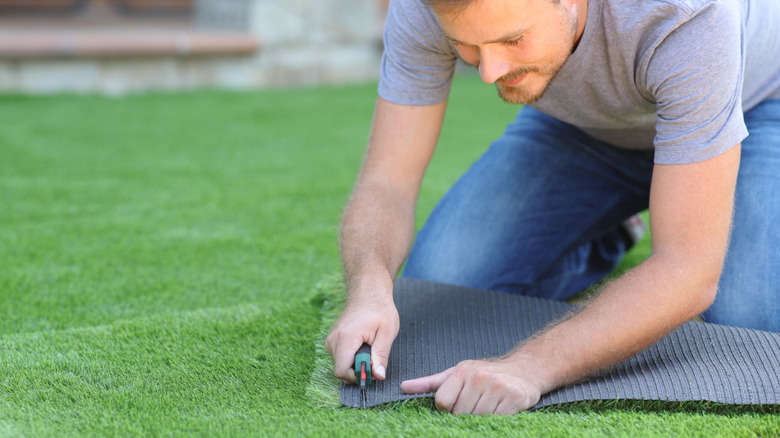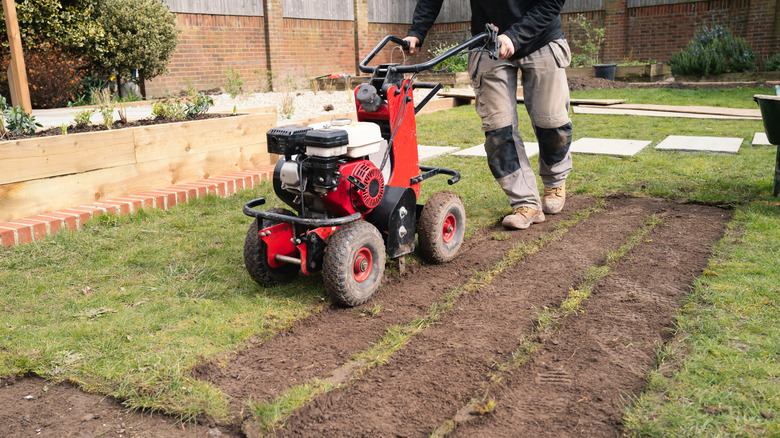How To Lay Artificial Grass On Any Soil Type
There are a number of pros and cons to installing artificial grass on your property, and the numerous advantages make it a popular choice. It doesn't need regular mowing like real grass. Weeds don't grow in it, so you don't need harmful chemicals to kill them. While artificial grass benefits from an occasional wash, it requires nowhere near as much water as natural turf, thus saving what is an increasingly scarce and costly resource. Most people understand that it doesn't get parched or scorched by the sun, but tips from landscapers on using artificial grass include the fact that it's also good for shaded areas like under trees, where true grass often struggles.
Although artificial grass offers great versatility, many experts say it should never be laid over existing turf or bare soil. Doing so can trap moisture, which creates an ideal environment for moss or weeds to grow. These can eventually disturb the upper surface, making it uneven. Dirt can also shift or wrinkle, in some cases causing the edges to lift. That doesn't mean you can't install a synthetic lawn in these places, but it is a bit more complicated than just rolling it out and trimming it to size. Regardless of the soil type, creating a proper base following the steps below is key.
Getting it right from the ground up
The first job is to clear the ground of old turf or any other type of plant growth. A mechanical sod cutter could come in very handy, and these can be rented for the day from a number of companies, including Home Depot. If that's too pricey, there's a hack that makes digging out grass much easier that you'll want to check out. The surface then needs to be leveled and compacted, which could be done with a shovel, although using a tamper tool or a plate compactor could save you time.
It's important that there's good drainage under the artificial turf. If water settles, it can cause mildew or mold, will start to smell bad, and may encourage bacteria growth. This shouldn't be a problem with topsoil or sandy soil, but if you're working with clay, it's a good idea to break it up and add some sand before compacting. You could install a French drain, which is a good idea if there's a general problem with water pooling in the yard, but doing so is more labor intensive. Some experts suggest laying landscape fabric as a weed barrier at this point, but there's a good reason to save it for later.
Completing the installation of your artificial grass
To make absolutely sure there's good drainage and to provide a solid foundation for all those playtimes and parties, you'll want to add a couple of inches of aggregate (gravel, for example), then compact it so it's firm. Then an inch of sand, again compacted. This provides a nice, smooth surface for laying the artificial grass. If the landscape fabric goes on now, it does the same job as it would have before and also prevents any random bits of aggregate from pushing through and damaging the artificial surface.
So, now it's time to roll out the grass, trim it to fit, and fix it in place with the border of your choice. That could be pavers, slabs, or any kind of garden edging. The final, optional step when laying artificial grass on any soil type is to add a bit of sand on top. This will help cool the surface in hot weather and can reduce "turf burn" if someone falls. People are often concerned about when they will need to replace their artificial grass. Follow these steps, and it could be good for twenty years. What's more, the durable, well-drained foundations mean it will be a breeze to change when the time comes.


